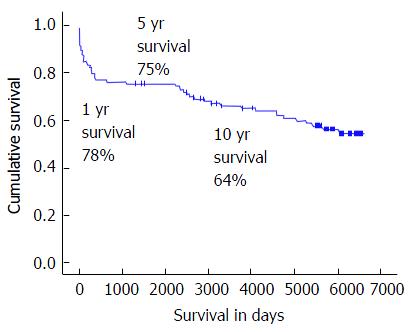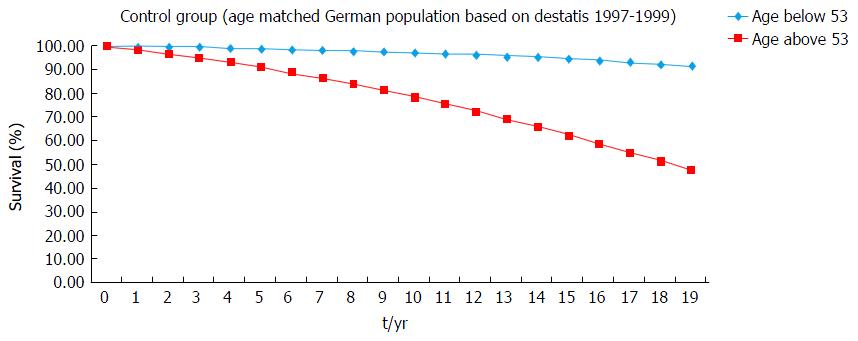Copyright
©The Author(s) 2017.
World J Hepatol. Mar 18, 2017; 9(8): 427-435
Published online Mar 18, 2017. doi: 10.4254/wjh.v9.i8.427
Published online Mar 18, 2017. doi: 10.4254/wjh.v9.i8.427
Figure 1 Overall survival of liver transplant recipients, monitored for 15 years.
Figure 2 Kaplan-Meyer survival analysis reveals increased survival for patients younger than the median (53 years) (A), with body mass index lower than the median (24 kg/m2) (B) and hepatitis B as underlying disease (C).
Figure 3 Age and body mass index at the time point of transplantation were higher in deceased patients in comparison to patients who survived.
Figure 4 Kaplan-Meyer survival analysis reveals increased transplant survival for patients younger than the median (53 years) (A), with body mass index lower than the median (24 kg/m2) (B) and hepatitis B as underlying disease (C).
BMI: Body mass index.
Figure 5 Percentage of survival in an age-matched control of the German general population (age range: 18-67 years).
This age-matched control cohort was constructed baseding on historical data about the German healthy population (https://www.destatis.de).
- Citation: Pischke S, Lege MC, von Wulffen M, Galante A, Otto B, Wehmeyer MH, Herden U, Fischer L, Nashan B, Lohse AW, Sterneck M. Factors associated with long-term survival after liver transplantation: A retrospective cohort study. World J Hepatol 2017; 9(8): 427-435
- URL: https://www.wjgnet.com/1948-5182/full/v9/i8/427.htm
- DOI: https://dx.doi.org/10.4254/wjh.v9.i8.427













